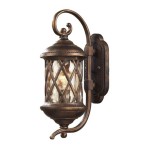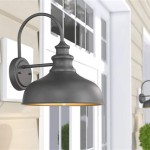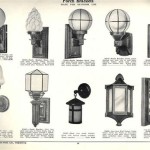Best Way to Paint Wrought Iron Outdoor Furniture
Wrought iron outdoor furniture offers a blend of elegance and durability, making it a popular choice for patios, gardens, and balconies. However, even with its inherent strength, wrought iron is susceptible to rust and corrosion when exposed to the elements. Proper painting not only enhances the aesthetic appeal of the furniture but also provides essential protection against environmental damage, extending its lifespan considerably.
The process of painting wrought iron furniture requires careful preparation, the selection of appropriate materials, and meticulous application. Skipping steps or using inferior products can lead to premature chipping, peeling, and rust formation, ultimately negating the purpose of the project. This article details the best practices for painting wrought iron outdoor furniture, ensuring a long-lasting and visually appealing finish.
Surface Preparation: The Foundation of a Durable Paint Job
Proper surface preparation is arguably the most critical aspect of painting wrought iron. A clean, smooth, and properly primed surface allows the paint to adhere effectively, preventing future problems. Neglecting this step will inevitably lead to paint failure, regardless of the quality of the paint used.
The first step in surface preparation is cleaning. Begin by removing any loose dirt, debris, and flaking paint. A stiff wire brush is excellent for this purpose, especially for intricate designs and hard-to-reach areas. For heavier dirt and grime, a solution of warm water and dish soap can be used along with a scrub brush. Rinse the furniture thoroughly with clean water and allow it to dry completely before proceeding to the next step.
After cleaning, inspect the furniture for rust. Rust is a major enemy of wrought iron and must be addressed aggressively. Small areas of surface rust can be removed using a wire brush or sandpaper. For more significant rust accumulation, a power tool such as a grinder with a wire wheel attachment may be necessary. Exercise caution when using power tools and wear appropriate safety gear, including eye protection and a dust mask.
Once the rust has been removed, the surface should be smoothed. Sandpaper, typically with a medium grit (around 100-120), can be used to feather the edges of any remaining paint and create a uniform surface. After sanding, wipe down the furniture with a tack cloth to remove any residual dust. A tack cloth is a sticky cloth specifically designed to pick up fine particles and provides an ideal surface for priming.
Degreasing is the final step in surface preparation. Even after thorough cleaning, oils and residues may still be present on the surface. These contaminants can interfere with paint adhesion. A degreaser, such as mineral spirits or denatured alcohol, should be applied with a clean cloth. Wipe the entire surface thoroughly and allow it to dry completely before moving on to priming.
Selecting the Right Primer and Paint: Ensuring Longevity and Aesthetics
Choosing the correct primer and paint is essential for the durability and appearance of the finished product. The primer acts as a bridge between the metal surface and the topcoat, promoting adhesion and providing a barrier against rust. The paint, in turn, provides the desired color and finish while offering further protection from the elements.
For wrought iron, a rust-inhibitive primer is indispensable. These primers contain chemicals that inhibit the formation of rust, even if the paint layer is compromised. There are two main types of rust-inhibitive primers: oil-based and epoxy-based. Oil-based primers are relatively inexpensive and easy to apply, but they may not provide the same level of protection as epoxy-based primers. Epoxy-based primers are more durable and offer superior rust resistance, but they are also more expensive and may require more skill to apply.
When selecting a primer, consider the environment the furniture will be exposed to. In areas with high humidity or frequent rainfall, an epoxy-based primer is generally the better choice. For less demanding environments, an oil-based primer may suffice.
The choice of paint is equally important. Exterior-grade paints are formulated to withstand the harsh conditions of outdoor use, including sunlight, temperature fluctuations, and moisture. Oil-based paints are known for their durability and glossiness, but they can be more difficult to work with and require longer drying times. Acrylic latex paints are water-based and easier to apply, clean up, and are often more environmentally friendly. High-quality acrylic latex paints can provide excellent durability and color retention.
Consider using paints specifically designed for metal surfaces. These paints often contain additives that improve adhesion and prevent rust. Furthermore, choose a paint finish that complements the style of the furniture and the surrounding environment. Gloss finishes are more durable and easier to clean but can also highlight imperfections. Semi-gloss finishes offer a good balance between durability and aesthetics. Matte finishes provide a softer look but may be less resistant to scratches and stains.
Before committing to a particular primer and paint, it is advisable to test them on a small, inconspicuous area of the furniture to ensure compatibility and achieve the desired result.
Application Techniques: Achieving a Smooth and Durable Finish
The application technique significantly impacts the final appearance and durability of the paint job. Applying the primer and paint too thinly can compromise protection, while applying them too thickly can lead to runs, drips, and extended drying times.
Before beginning the application process, protect the surrounding area with drop cloths or plastic sheeting. Wear appropriate protective gear, including gloves and a respirator, especially when working with oil-based products or spray paints. Ensure adequate ventilation to prevent the buildup of fumes.
The primer should be applied in thin, even coats. Whether using a brush or a spray gun, avoid applying too much primer at once. Multiple thin coats are always preferable to one thick coat. Allow each coat to dry completely before applying the next. Refer to the manufacturer's instructions for recommended drying times.
When using a brush, choose a high-quality brush specifically designed for the type of paint being used. Synthetic brushes are generally better for acrylic latex paints, while natural bristle brushes are better for oil-based paints. Use smooth, even strokes to apply the primer, overlapping each stroke slightly to ensure complete coverage. Pay particular attention to edges, corners, and intricate details.
Spray painting can provide a smoother and more uniform finish, especially on complex wrought iron designs. When using a spray gun, maintain a consistent distance from the surface and use a smooth, overlapping motion. Avoid holding the spray gun in one place for too long, as this can lead to runs and drips. Apply multiple thin coats, allowing each coat to dry completely before applying the next.
The same principles apply when applying the paint. Apply the paint in thin, even coats, allowing each coat to dry completely before applying the next. Follow the manufacturer's instructions for recommended drying times and recoating intervals.
After the final coat of paint has dried completely, inspect the furniture for any imperfections, such as runs, drips, or missed spots. Touch up these areas as needed. Allow the paint to cure fully before placing the furniture back into service. Curing times can vary depending on the type of paint used and the environmental conditions, but typically range from several days to a week.
Regular maintenance can help prolong the life of the paint job. Clean the furniture periodically with a mild soap and water solution to remove dirt and debris. Inspect the furniture regularly for signs of rust or damage and touch up any affected areas promptly. With proper care and maintenance, a well-executed paint job can protect and beautify wrought iron outdoor furniture for many years to come.

Best Ways To Paint Wrought Iron True Value

How To Paint Metal Patio Furniture Green With Decor

How To Spray Paint Metal Outdoor Furniture Last A Long Time H2obungalow

Spray Painting Wrought Iron Furniture Life Love Larson

How To Paint Patio Furniture With Chalk

How To Paint Wrought Iron Outdoor Furniture

Painting Metal Patio Furniture How To The Mom Of Year

How To Spray Paint Metal Outdoor Furniture Last A Long Time H2obungalow

How To Paint Metal Patio Furniture

How To Paint Metal With Rust Oleum Universal
Related Posts







